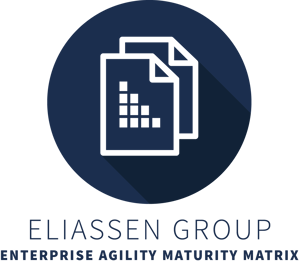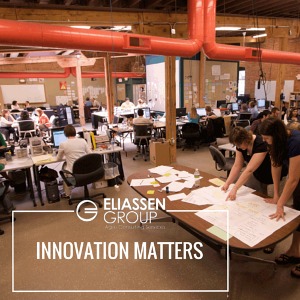We are seeing a rising interest in improving Product practices within our client base. Each organization has its own drivers for this, but there are a few we see consistently that we want to share with our readers.
First, we hear clients tell us they are doing agile delivery well but aren’t seeing the increase in throughput expected. And, upon examination, they find that the product process has been the bottleneck.
Secondly, clients are telling us that their agile delivery changes stall out and fail to stick. On review, they’ve noticed that their teams aren’t getting requirements in the correct manner.
Finally, our clients have shared that they are “doing agile” and are delivering better, but aren’t seeing an improvement in customer response.
In this article, we will discuss all three of these trends and offer some straightforward improvements to your product practice that can help you overcome them. Because while doing good product work is hard, if you follow the right organizational and professional patterns, it’s not complicated to do.
We touched on some of those patterns in our last blog. In this article, we want to dive deeper and discuss some specific patterns in the context of the problems we see above.
Right Sizing and Right Skilling Your Team to Facilitate Seamless Intake
If you’re doing agile well, and throughput isn’t rising, one thing to look at is the product ‘intake’ system. Intake sits upstream of delivery and can choke off delivery for many reasons. Here are a few:
- Your teams are understaffed or under skilled. There are too few people doing product work, or product work is just a fractional portion of someone’s job, and it is frequently crowded out of their workday. Each product owner is responsible for potentially 20 team members. They need to be able to engage and support each of these people all the time, not just during specific team ceremonies. A fully burdened cost for a development team of 10 onshore can be $2.5 million per year, and inadequate product resources can reduce effectiveness by a third. So, you’re risking more than $800,000 in productivity to save $125,000 by understaffing or under skilling the product owner role.
- Top-level product management is inadequate. You may have a full complement of Product Owners supporting teams, but their work is diffuse and uncoordinated because there is a gap in envisioning and defining products at the top of the organization. Product pipeline should connect with vision and strategy to organizational capability-building through the delivery of products that deliver or support new capabilities. There needs to be clear definition and ongoing management of top-level product delivery to ensure it can be crisp and accurate.
To support and enhance your product team, consider either training or upskilling staff, or adding player-coaches in the form of experienced product people at the appropriate level who can work alongside your team, model best behaviors and practices, and provide temporary support through added capacity.
These can be team-level product owners who are decomposing large epics and features into stories just-in-time for the teams to consume them. They can also be executive-level product managers who can help translate strategy into organizational capabilities and those capabilities into products and product enhancements.
The Impact of Traditional Project Models on Work Design
Some organizations are seeing the wave of improvement that agile change brought ebb and the agile behaviors that brought those improvements begin to fade. There can be several drivers for this problem, but one key one is a work design and intake system that is built on a traditional project model.
By treating all work as a project, rather than incremental development or improvement of a product, organizations force their agile teams into behaviors (cost and completion tracking as well as large-batch development) that conflict with those that make agile work. They also risk having agile teams that are not aligned themselves or as teams of teams with products, driving up dependencies, handoffs, and delay.
Project work also inherently isolates teams from their customers who are hidden behind project proposals and thick design documents are needed for budgeting and approval. Without fast and frequent feedback, we are blocking the adaptive advantage teams can gain from agility.
Here, the path we see as leading to best outcomes is typically senior-level coaching and training to shift from program and project to product, and to shift from program and project-based budgeting to capacity-based budgeting. Both are material changes in how an organization plans and budgets and needs careful implementation, and executive-level coaching and training and building a strategic plan to implement these changes with care and deliberation is key.
Low Customer Engagement
Other organizations are experiencing fast and low-friction delivery, but customers aren’t responding in the ways they want to what they’re building.
Customer success is driven by a magical mixture of knowledge, empathy, and creativity. The problem is how to leverage and support those in a world where budgets are real and risk matters. The secret isn’t necessarily slow, expensive, massive market research and extensive focus grouping but, instead, a lightweight mix of research, empathy-creating interaction, and small-bet experimentation that allows you to understand your customer by seeing what they want. Building discovery and ideation capabilities into the delivery groups can be a powerful tool to unlock new products – or just significant improvements in existing ones.
It’s hard to make people creative. But there ARE well-worn patterns for unleashing creativity, as well as hiring people who possess those soft skills, and most important, for making it practical and testable. Connecting this to behaviors and organizational structures that support customer line of sight and empathy, and you have the basis for uncovering wins and gaps in your product ideas.
Again, there are well-worn paths to moving past each of these issues. But it takes a commitment to change and to build on a base of solid agile practices to deliver what the customer thinks is valuable economically, rapidly, and successfully.



